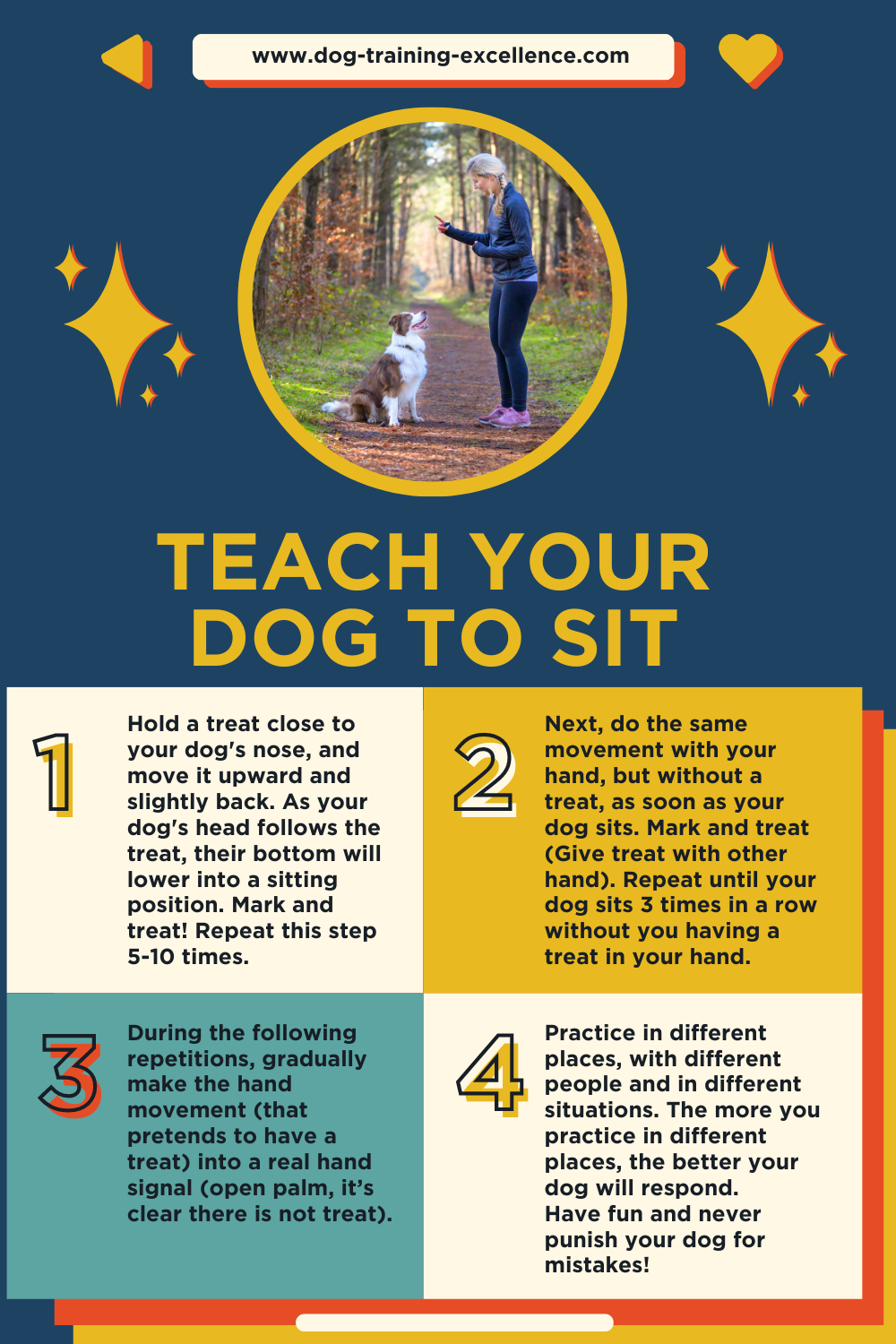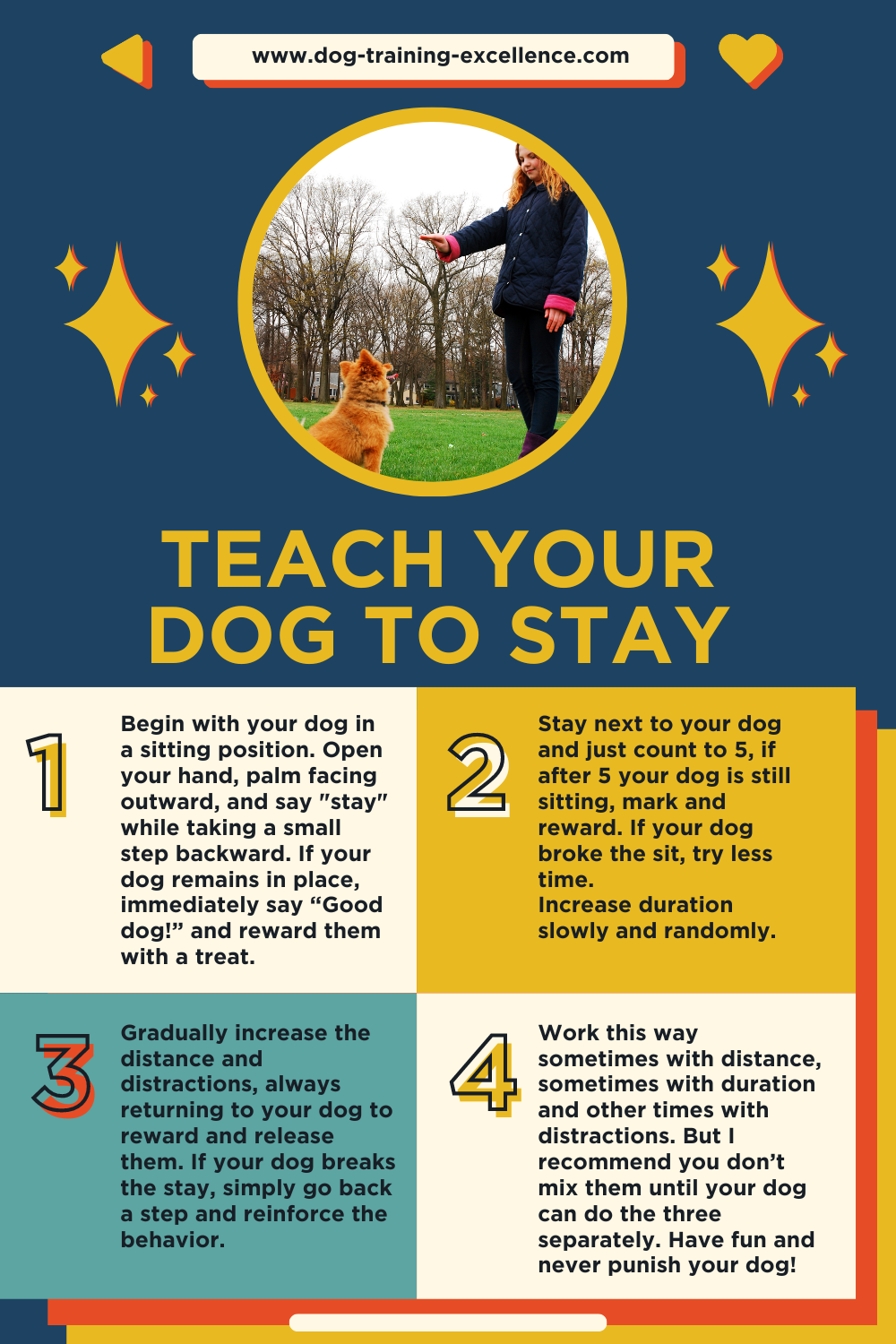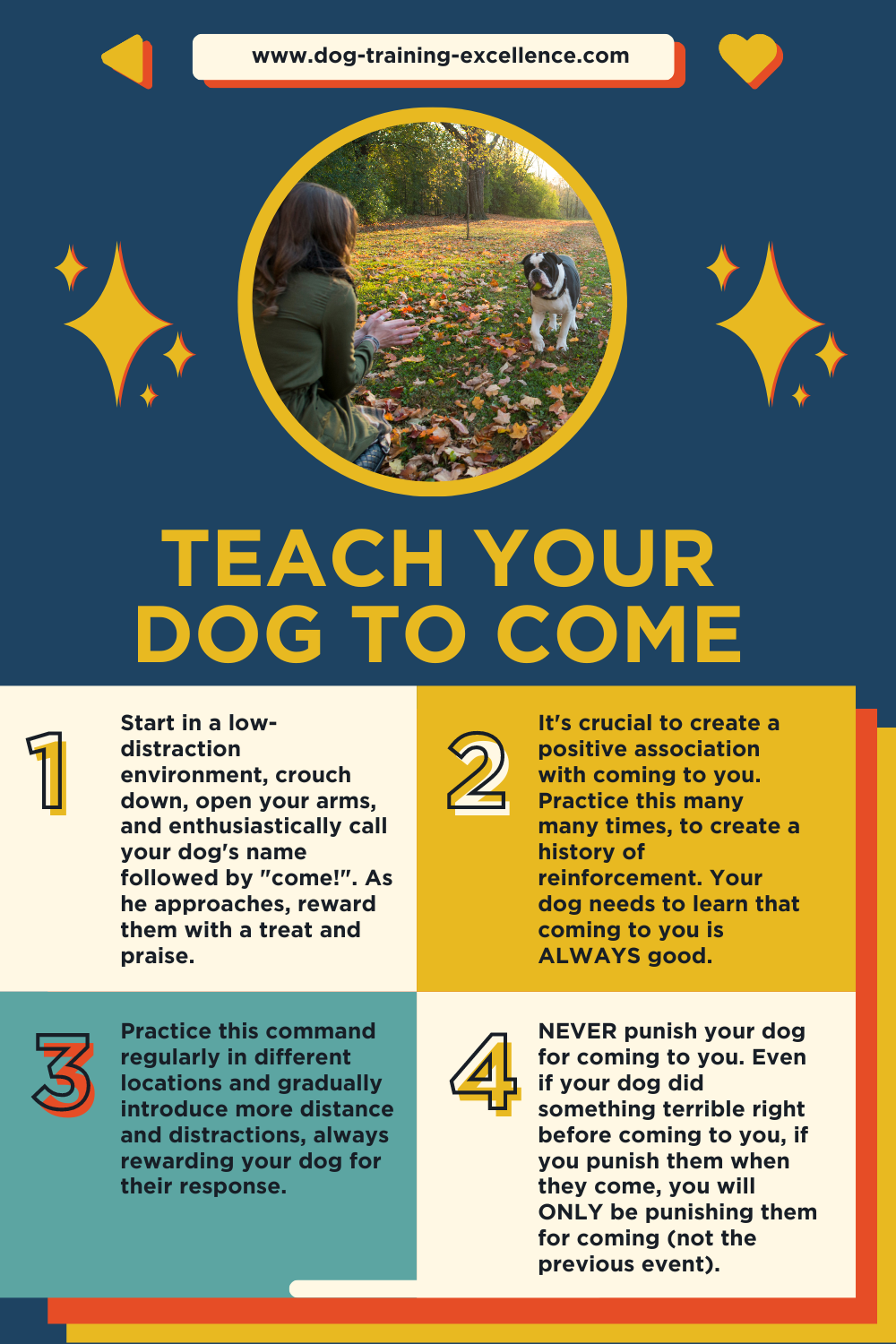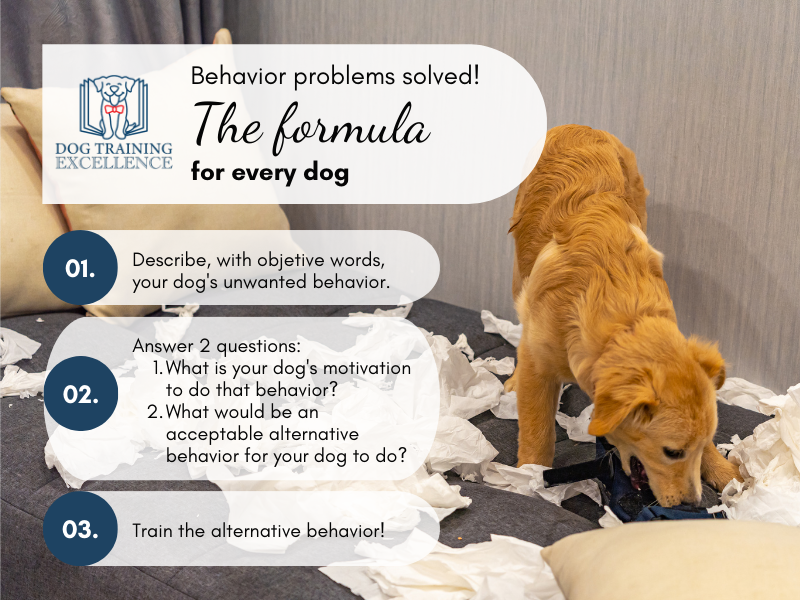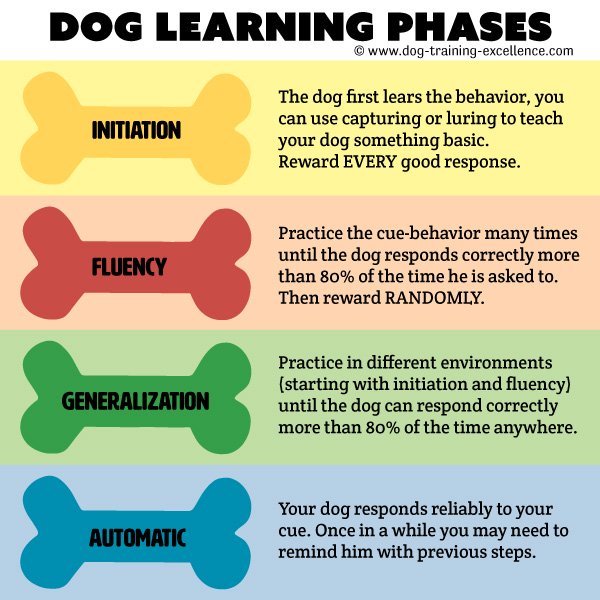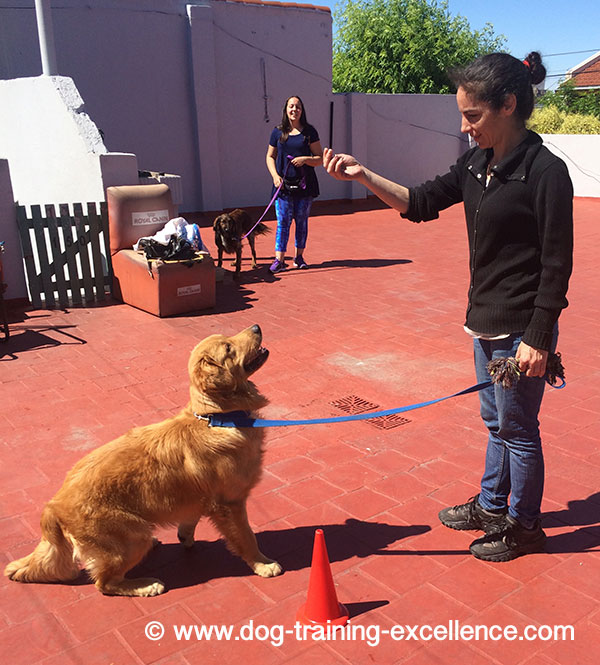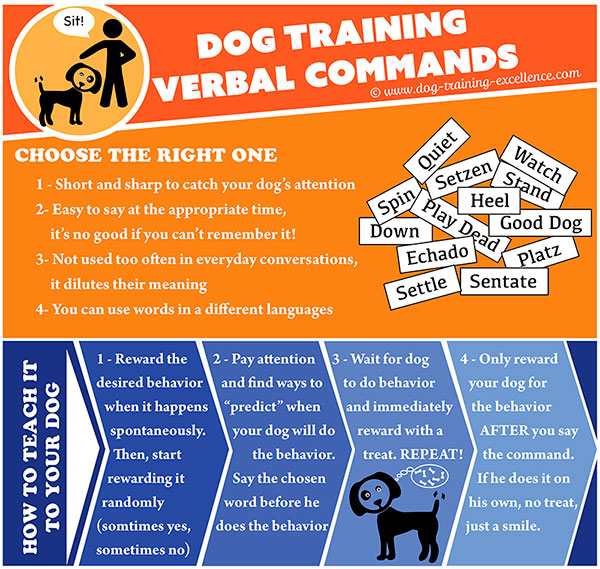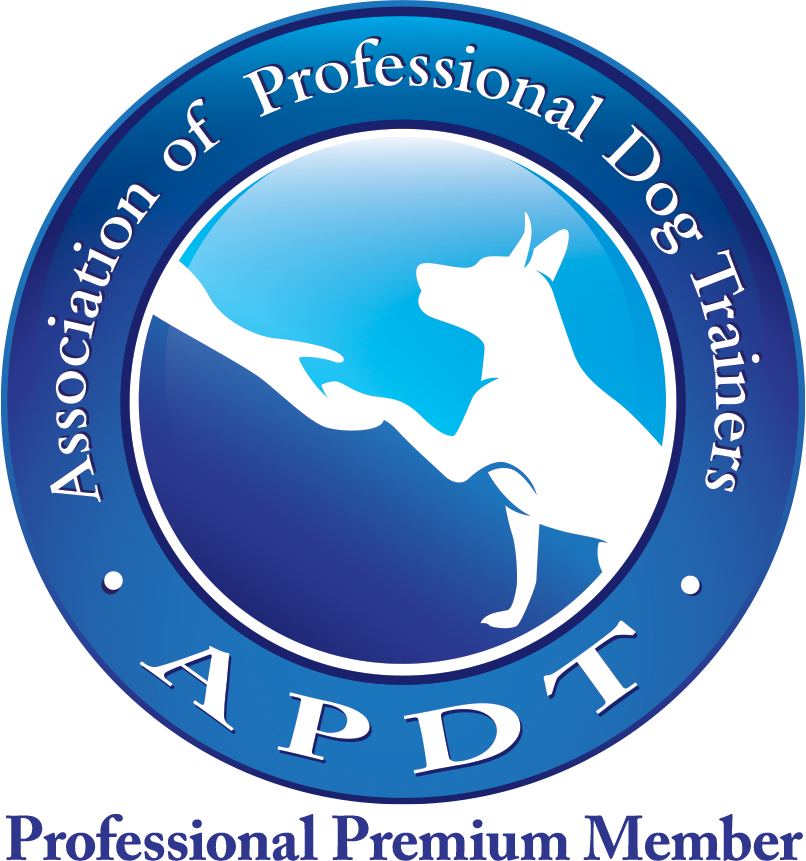I try to write my posts as unbiased as possible and recommend the products I consider to be useful and the best. I use affiliate links, this means that–at no extra cost to you–I can make a commission on a purchase you make after clicking on them. As an Amazon Associate I earn from qualifying purchases.
From Chaos to Calm:
Master Dog Training Techniques
for Obedience
Hey there, fellow dog lovers! Are you ready to uncover the secret to achieving perfectly behaved dogs? Well, you're in luck because I'm here to share my knowledge as an experienced and certified professional dog trainer specializing in reward-based methods. In this article, we'll explore the world of dog training techniques for obedience and discover how positive reinforcement can transform your dog's behavior. So, let's dive in and unleash the potential of your furry companion!
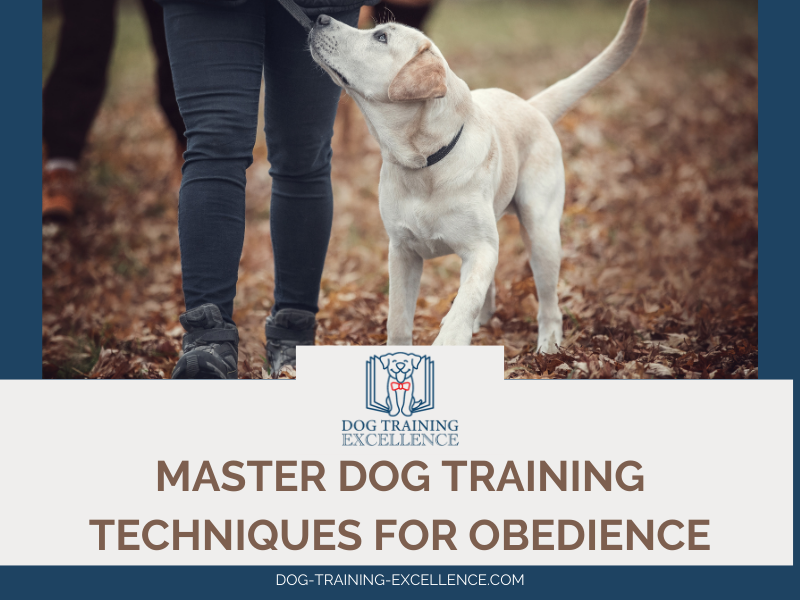
Article highlights:
- Does reward-based dog training work?
- Foundation Training for Obedience
- Problem-Solving Techniques for Obedience Issues
- Advanced Obedience Training
- Overcoming Training Plateaus
- Maintaining Obedience in Real-Life Situations
- Troubleshooting Common Training Challenges
- Supercharge Your Dog's Obedience with Advanced Training Techniques
Does reward-based dog training work?
Yes! At the core of effective dog training techniques for obedience lies the concept of reward-based methods, a scientifically-backed approach. This approach focuses on positive reinforcement, where desirable behaviors are rewarded to encourage their repetition. Unlike punitive techniques, reward-based training strengthens the bond between you and your dog. Through positive training, your dog learns to associate your presence and interactions with positive experiences, leading to a stronger bond built on trust and respect. In addition, we create an environment of encouragement and motivation for our furry friends to want to learn and participate.
What is positive reinforcement? It means rewarding your dog with something they find enjoyable, such as treats, praise, or play, immediately after they exhibit the desired behavior. This technique helps establish a clear association between the behavior and the positive outcome, making it more likely for the behavior to be repeated in the future.
EXPERT TIP:
The key word in the above paragraph is “immediately after”, if you wait more than 2 seconds to reward your pet, the association you wanted to create is likely lost.
On top of everything I just told you, positive dog training as many benefits backed up by actual scientific research:
- It is highly effective in promoting desired behaviors and creating a harmonious relationship between you and your dog.
- Dogs trained using positive reinforcement methods are more responsive, exhibit fewer behavior problems, and have better long-term obedience compared to dogs trained using punitive or aversive methods.
- Positive reinforcement has been found to have a long-lasting impact on a dog's emotional well-being. It helps reduce stress and anxiety, promotes a positive emotional state, and enhances their overall quality of life.
Foundation Training for Obedience
To establish a solid foundation for obedience training, it's essential to begin with basic commands such as sit, stay, and come. These fundamental commands form the building blocks for more advanced training and lay the groundwork for a well-behaved and attentive dog. Most importantly, they start building a form of effective communication between you and your pet.
By following step-by-step dog training techniques for obedience, you can effectively teach your dog these crucial commands.
Teach your dog how to Sit in 5 minutes:
1. Start by holding a treat close to your dog's nose, and then gradually move it upward and slightly back. As your dog's head follows the treat, their bottom will naturally lower into a sitting position. As soon as their bottom touches the ground, say “Good dog!” (or the praise word you like most) and immediately reward them with the treat.
2. Repeat this step 5-10 times (until your dog starts sitting faster, instead of walking backwards of jumping up).
3. Next, do the same movement with your hand, but without holding a treat (your hand must be empty), as soon as your dog sits say “Good god!” and give them the treat. Repeat as many times as you need to be able to do 3 successful repetitions in a row, don’t do more than 20 repetitions though.
4. If you hit 20 repetitions or got your dog to do 3 successful repetitions in a row, now is a good time to take a break. Pet your dog, play with your dog, let him have some water or time in the yard before continuing.
5. Continue until you get 3 successful repetitions of your dog sitting when you move an empty hand in front of them.
6. Next, make the movement of your empty hand a little more like a hand-signal, and not so much as if you were holding an invisible treat. You are teaching your dog to sit when he recognizes a hand-signal (dogs are way better at this than recognizing words).
7. To continue advancing this skill follow this link.
Recommended Positive Dog Training Tools
Positive dog trainers are known to use very little gadgets and tools. This is because we want training to be positive and won't use corrective leashes nor other corrective tools. We do use 3 very basic tools for dog training, here are my favorite ones:
The perfect treat
The perfect treat is small, yummy, healthy and easy to store just like Stewart Freeze Dried Dog Treats. Freeze dried treats are natural and easy to carry around without making a mess and dogs love them!
The pouch
Professionals use treat pouches because they free your hands and help with timing. The best one have a magnetic clasp and a removable inner bag for easy washing like the Viklluyr Dog Treat Pouch.
The clicker
This one is NOT an absolute must, but when you get to advanced training it will be a good tool to have. My favorite kind is a clicker ring, because it also keeps your hands free. Clicker training is fun!
Teach your dog to Stay:
1. Begin with your dog in a sitting position. Open your hand, palm facing outward, and say "stay" while taking a small step backward. If your dog remains in place, immediately say “Good dog!” and reward them with a treat.
2. Gradually increase the distance and duration of the stay, always returning to your dog to reward and release them. It's important to progress gradually and not rush the training. If your dog breaks the stay, simply go back a step and reinforce the behavior.
3. Now repeat the above steps but this time, instead of moving away from your dog, stay next to him and just count to 5, if after 5 your dog is still sitting, mark and reward. If your dog broke the sit, try less time.
4. Gradually increase the time.
5. You can work this way working sometimes with distance, sometimes with duration and other times with distractions. But I recommend you don’t mix them until your dog can do the three separately.
6. To continue advancing this skill follow this link.
Teach your dog to Come when
called:
1. For this command, start in a low-distraction environment, such as your backyard or a quiet room. Crouch down, open your arms, and enthusiastically call your dog's name followed by "come!" As your dog approaches you, reward them with a treat and shower them with praise. It's crucial to create a positive association with coming to you. Practice this command regularly in different locations and gradually introduce more distractions, always rewarding your dog for their response.
2. To get a perfect recall follow this link for step-by-step instructions.
Consistency, patience, and positive reinforcement are key elements in dog training techniques for obedience. Dogs thrive on consistency, so be sure to use the same verbal cues and hand signals for each command. Additionally, maintain a positive and patient demeanor throughout the training process. Dogs are more receptive to learning when they feel safe, loved, and supported.
Remember, each dog is unique and learns at their own pace. I have met dogs that learn how to sit with a hand signal in 10 repetitions, yet other took a few days. Be respectful of your dog’s learning speed.
Problem-Solving Techniques for Obedience Issues
I have a secret to tell you, you can solve many dog behavior problems with this little recipe about dog training techniques for obedience:
1. First, describe the behavior you don’t like. Use objective words, not labes. For example, don’t say my dog gets “crazy”, say my dog barks for 1 minute straight while jumping with his front paws on people. Another example: My dog is “stubborn”, instead say “When I call my dog for his bath he runs away from me, hides under the bed and growls when I try to reach him”. The more specific you are describing the behavior, the better trainer you will become.
2. Now you that you have described objectively that pesky behavior, answer these two questions:
- What motivates my dog to do that unwanted behavior? To answer this question try to see what your dog really wants. Maybe your dog is looking for attention, maybe your dog is bored and is trying to entertain himself, maybe your dog is hungry and wants to eat, maybe your dog is afraid and wants to hide/escape. Answering this question is supremely important, first, it will help you understand your dog better, and second, it will help us answer the next question.
- What would be an acceptable alternative behavior to teach your dog (that he can do instead of the unwanted behavior? To answer this question, you must keep in mind the answer to the previous one. If your dog is jumping up on you to get you to play because he is bored, teaching him to do a down stay on his mat is not going to work (he is bored! He doesn’t want to rest!). I could instead say, “I want my dog to approach me with a toy in his mouth”. Finally, when you answer this question also describe the desired behavior in an objective way, no labels! Don’t say I want him to be “calm”, say “ I want my dog to lay on his bed while he chews on a toy”.
EXPERT TIP:
The best alternative behaviors are those that are -incompatible- with the undesirable behaviors. For example, most dogs can’t bark with a toy in theirs mouths!
3. OK, you described the unwanted behavior, and you have an alternative behavior, now it’s time to train! Of course, the training will be differently depending on what you need your dog to do. But, if you can use Sit, Stay or Come as the alternative behaviors, use those (you already learned them above!). The next best thing to do is to set up the environment to encourage your dog to do the alternative behavior, when he does mark and reward! Repeat, repeat and keep repeating until your dog chooses to do the new behavior and forgets about the unwanted one.
Here are a few examples to inspire you:
- Pulling on the leash
Unwanted behavior: Dog pulls on the leash during walks.
Alternative behavior: Dog walks with a loose leash during walks.
Training advice: Whenever dogs starts pulling, come to a halt and WAIT. Wait until your dog looks at you or slightly moves his body backwards loosening the tension on the leash. At that moment, resume walking walking is the reward). Repeat every time your dog pulls.
- Jumping up on people
Unwanted behavior: Dog jumps on me with 2 front paws when I get home.
Alternative behavior: Dog greets me with four paws on the floor wagging its tail.
Training advice: When your dog jumps up on you, turn around and ignore him (do not touch, talk or look at him). The moment his 4 paws are on the ground, bend down and pet him all over. If your dog jumps again, repeat. Repeat every time you come home.
- Constant chewing
Unwanted behavior: Dog chews on everything that he finds at home.
Alternative behavior: Dog chews his own toys.
Training advice: Set up the environment: put everything away and only leave dog toys out. Reward your pet for interacting with toys (play with him, use interactive toys).
Advanced dog training techniques for Obedience
Once your dog has mastered the basics, it's time to level up! Advanced commands like lie down, heel, and leave it add an extra layer of control and discipline to your dog's repertoire. Most importantly, they keep on building a vocabulary and changing your dog’s brain in a positive way.
Many people think that teaching your dog commands with dog training techniques for obedience is not useful, or they think they are only circus tricks. This is so far from the truth. Teaching your dog signals and commands makes your dog smarter, it’s like teaching a child to read. You are giving your dog a powerful tool to understand humans.
The most durable dog toys for your Puppy
As a Certified Professional Dog Trainer I can tell you that one of the biggest challenges of owning a dog is finding ways to keep your puppy from destroying everything! Many dogs are high energy and and very smart, they need something to do!
Here are my favorite and most durable dog toys to keep your dog entertained and tired.
Kong Classic
The best dog toy in the market! It is almost indestructible, you can use it as a ball, you can fill it and make it an interactive toy, your dog can chew on it to its heart content. I recommend you start with a 2-pack, that way you can always have one frozen and ready to entertain your puppy! |
Benebone Chews
If your puppy loves chewing on everything, then Benebone is here to save your home! These are safe and long-lasting chews full of flavor. I recommend you get a 4-pack and rotate the chews daily. This way your puppy will think he is having a new chew toy each day! |
Goughnuts toys
Another very recommended chew toy, these are USA made and also almost indestructible. Your dog will love to chase and chew any of these toys. I recommend you get one and try it with your dog, see if he likes to chase a stick or a doughnut, there are different shapes available. |
Overcoming Training Plateaus
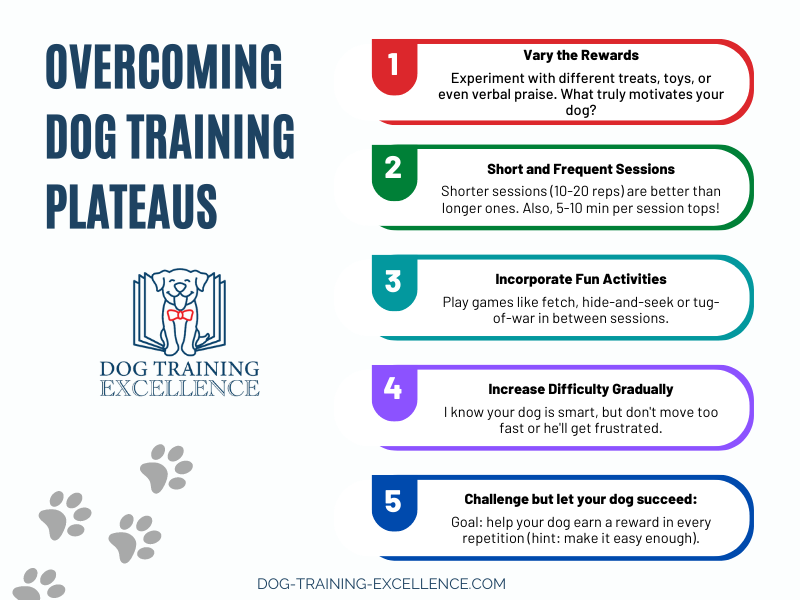
During the course of using dog training techniques for obedience, it's common to encounter training plateaus, where progress may appear to stall or slow down. These plateaus can be frustrating, but with the right approach, you can overcome them and continue making strides with your dog's training.
Training plateaus can occur when your dog becomes comfortable with the current level of difficulty and stops showing improvement. To overcome plateaus, it's crucial to keep training sessions engaging and challenging. Here are some tips to help you through this phase:
1. Vary the Rewards: Introduce a variety of rewards to keep your dog motivated. Experiment with different treats, toys, or even verbal praise. Discover what truly excites and motivates your dog and use those rewards strategically during training sessions. Not every reward has the same value, keep note of your dog's reward ranking and save the best for the hardest training sessions.
2. Short and Frequent Sessions: Break down training into shorter, focused sessions throughout the day rather than one long session. This helps maintain your dog's attention and prevents mental fatigue. Short bursts of training, consistently sprinkled throughout the day, will yield better results than infrequent lengthy sessions.
3. Incorporate Fun Activities: Break the monotony of regular training exercises by incorporating fun activities. Play interactive games like hide-and-seek, tug-of-war or fetch. Add game time in between training sessions to keep the energy up. Teach your dog new tricks that are slightly more challenging. By adding a playful element, you can reignite your dog's enthusiasm and make training sessions enjoyable for both of you.
4. Increase
Difficulty Gradually: Gradually increase the difficulty level of the training
exercises. For example, if your dog has mastered sit-stay indoors, start
practicing the command in more distracting environments, such as the backyard
or a nearby park. By incrementally raising the bar, you provide new challenges that
keep your dog engaged and continuously progressing. Moving too fast will most likely make your dog fail and get frustrated.
5. Challenge but let your dog succeed: Positive dog training is all about making sure your dog succeeds in every repetition. If your dog seems to be off his game, make exercises easier and then go back up. If your dog is not responding correctly, it’s not because he is “being stubborn”, there is probably something affecting him or he simple doesn’t know what you are asking. Going back to basics is ALWAYS the right choice.
By incorporating engaging and challenging elements into your training sessions, you can overcome plateaus and continue to make progress. Stay patient, persistent, and celebrate every small victory along the way. The journey of training is an ongoing process, and with the right approach, you and your dog will continue to grow together.
Maintaining Obedience in Real-Life Situations
Training your dog within the controlled environment of your home is only half the battle. To achieve real-life obedience, generalize their training to different settings and distractions. Practice commands in parks, busy streets, or even with other dogs around.
Dogs are not really good at generalizing, that is why whenever you change your training to be more challenging or in a different setting, it’s likely your dog will regress. This is absolutely normal. The solution, start over. As many times as needed, start over. I promise that the more your practice the more your dog will learn how to generalize and be obedient even en real-life situations.
Troubleshooting Common Training Challenges
Dog training techniques for obedience, especially reward-based dog training seems easy. You see trainers with a treat in their hand and the dog doing everything they ask them. But, the truth is, dog training is a skill, and like any other skill you need to practice it to get good at it. Here are my top 4 recommendations to become the best dog trainer to your dog:
1. Watch videos of good reward-based dog trainers: look for their body movements and timing. Watch how, where and when they reward the dog. See how they arranged the environment to promote the dog to do the desired behavior. Learn from them!
2. Videotape yourself: I know, nobody likes to watch themselves on video, but as you watch note your timing, your body language and how your dog responds to you. You will learn a lot just from watching yourself.
3. Hire a dog trainer: there is nothing like learning from the pros, I promise your will learn a lot and get a lot of good advice and feedback. Just make sure to hire certified and reward-based dog trainers (good certifications are CPDT-KA, CPDT-KSA, KPC-CTP).
4. Practice! There is no substitute for this, you just must do the job. But always remember to have fun.
Supercharge Your Dog's Obedience with Advanced Training Techniques
Unleashing the Full Potential of Your Canine Companion!
Taking your dog training techniques for obedience to the next level requires advanced training techniques that go beyond the basics. By incorporating these advanced techniques, you can achieve unparalleled results and truly unlock your dog's full potential. Let's explore some of the most effective advanced dog training techniques and discover how they can benefit you and your furry friend.
1. Off-Leash Training: Imagine the freedom of having your dog respond to commands even without a leash. With off-leash training techniques, you can enjoy walks, hikes, and adventures while maintaining complete control and ensuring your dog's safety. Whether it's teaching a reliable recall or mastering distance commands, off-leash training empowers you to confidently explore the world with your well-behaved and obedient dog.
2. Agility Training: Agility training not only provides mental and physical stimulation for your dog but also enhances their overall obedience and coordination. Through a series of obstacle courses, jumps, tunnels, and weave poles, agility training improves your dog's focus, agility, and responsiveness to your commands. It's a thrilling activity that strengthens the bond between you and your dog while boosting their obedience skills.
3. Canine Sports Training: Engaging your dog in sports such as obedience trials, rally obedience, or scent work can take their obedience to new heights. These activities provide structured environments where your dog can showcase their obedience skills in a competitive setting. Participating in canine sports not only enhances your dog's obedience but also adds a fun and fulfilling dimension to your training journey.
4. Complex Commands and Tricks: Teaching your dog complex commands and tricks not only impresses others but also stimulates their mental capacity. By challenging your dog with advanced commands like "fetch the newspaper" or "turn off the light," you keep their mind sharp and engaged. Advanced tricks not only demonstrate your dog's obedience but also provide opportunities for mental stimulation, creativity, and a deeper connection between you and your furry companion.
5. Service Dog Training: If you have specific needs or require assistance, training your dog as a service dog can be life-changing. Service dog training involves advanced obedience skills and specialized tasks tailored to meet your specific requirements. From guiding individuals with visual impairments to providing support for those with mobility challenges, service dogs offer invaluable assistance while exemplifying the highest levels of obedience and reliability.
By incorporating these advanced dog training techniques for obedience into your training regimen, you'll witness incredible improvements in your dog's obedience and overall behavior. So, why settle for basic obedience when you can elevate your dog's skills to extraordinary levels? Unleash the full potential of your canine companion today and experience the joy of having a perfectly obedient and well-rounded dog by your side.
Happy training!
Was this article helpful?
2 ways to help me continue writing professional training content
|
I am a Certified Professional Dog Trainer with more than 15 years of experience. You can hire my services through my Online Dog Training Academy.
|
For as little as $1 a month you can be my Patron and get exclusive benefits while helping me to continue to create the best and most updated content about dog training and positive methods. Be a modern philanthropist through Patreon.com |
The article "dog training techniques for obedience" was written by Natalia Rozas, Ph.D. and Certified Professional Dog Trainer (CPDT-KA #4071465) and updated on March 28th, 2024. Case studies and anecdotes are real but to protect the privacy of our clients the names and details are changed.
- Home
- How to Train a Dog
- Dog Training Techniques for Obedience
